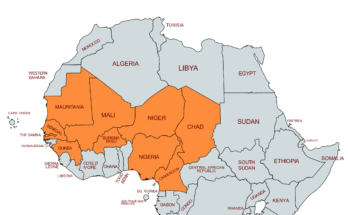by Bill Ostrove, International Military Markets Analyst, Forecast International.
The fight against drug cartels and organized crime remains the primary driver of defense procurement by Mexico. As Mexico’s economy improves and operations against drug cartels continue, defense spending is being steadily increased. Between 2011 and 2015, Mexico’s defense budget increased at a compound annual growth rate (CAGR) of 5.8 percent. Still, defense spending remains low relative to the overall economy, making up only 0.54 percent of GDP in 2015.
When measured in dollars, defense spending declined in FY16. However, this is largely due to the rising value of the dollar compared to the peso. In terms of pesos, Mexico’s FY16 defense budget shows an increase of 1.4 percent to MXN99,651.9 million. Of this, the Sedena will receive MXN72,250.7 million, while the Navy will receive MXN27,401.2 million.
The largest portion of defense spending in Mexico goes to personnel expenses. In FY16, 68.2 percent of all budget expenditures will be allocated to personnel. This is partially because of the types of operations Mexico’s military is involved in, including internal operations against drug cartels. These do not require extremely expensive equipment such as multirole jet fighter aircraft. In addition, aid from the U.S. – especially between FY12 and FY14 – has helped cover the cost of equipment purchases, freeing the Mexican government to pay for day-to-day expenses.
Between 2006 and 2010, the average military salary was increased by 107 percent in order to improve morale and reduce the rate of desertions, which had been growing.
Since then, however, growth in the cost of personnel expenses has slowed. In FY15, personnel expenses rose only 0.1 percent, and in FY16, 2.1 percent. Investment expenses have increased the most in recent years, rising a whopping 66.8 percent in FY15 and then by 3.5 percent in FY16. Total investment expenditures climbed from 8.8 percent of combined Sedena and Semar expenses in FY14 to 13.8 percent in FY16. This increase is partially to make up for a drop in U.S. aid, which declined from $160 million in FY14 to an estimated $90.7 million in FY16. Increased monies for investment will primarily cover the cost of new equipment that Mexico is purchasing to improve its operational capabilities.
Because Mexico’s armed forces are typically involved in operations against drug cartels and organized crime, most acquisitions focus on surveillance operations and improving mobility. Large naval ships, multirole fighters, and other power projection equipment are not major procurement targets. Instead, acquisition priorities include new EC 725 Cougar helicopters, C-295 transports, Polaris II and Ténochtitlan coastal patrol vessels, DN-XI tactical vehicles, and 3-D surveillance radar systems.
Going forward, defense spending will increase steadily. Mexico’s economy remains one of the most stable in Latin America, and government finances are also sound as the government engages in tax reform and reduces its reliance on volatile oil revenue. Mexico also remains popular with bond investors, due to its financial stability relative to Latin American countries such as Brazil and Venezuela. This stability makes it easier and cheaper for the government to borrow money.
Threats from cartels and the military’s role in dealing with those groups will further drive defense spending. Mexico’s continued economic growth will depend at least in part on the security and stability within the country. In order to maintain the military as it fights various groups, the government will keep defense spending level relative to GDP.
Factors remain that could put downward pressure on defense spending going forward. Oil production remains an important part of Mexico’s economy. With prices expected to remain low over the next few years, Mexico’s economy could feel the pinch. In addition, the value of the peso is expected to continue to fluctuate. Therefore, while Mexico’s defense budget will continue to increase, it will not grow at the pace that it did between 2012 and 2016. Forecast International expects a CAGR of 4.2 percent between 2017 and 2021.
Please feel free to use this content with Forecast International and analyst attributions, along with a link to the article. Contact Ray Peterson at +1 (203) 426-0800 or via email at ray.peterson@forecast1.com for additional analysis.
The Forecast International International Military Markets series examines the military capabilities, equipment requirements, and force structures inventories of 140 countries, with corresponding coverage of the political and economic trends shaping the defense market outlook for individual countries and regions.
For 50 years, Forecast International intelligence reports have been the aerospace and defense industry standard for accurate research, analysis, and projections. Our experienced analysts compile, evaluate, and present accurate data for decision makers. FI's market research reports offer concise analysis of individual programs and identify market opportunities. Each report includes a program overview, detailed statistics, recent developments and a competitive analysis, culminating in production forecasts spanning 10 or 15 years. Let our market intelligence reports be a key part of reducing uncertainties and mastering your specific market and its growth potential. Find out more at www.forecastinternational.com



